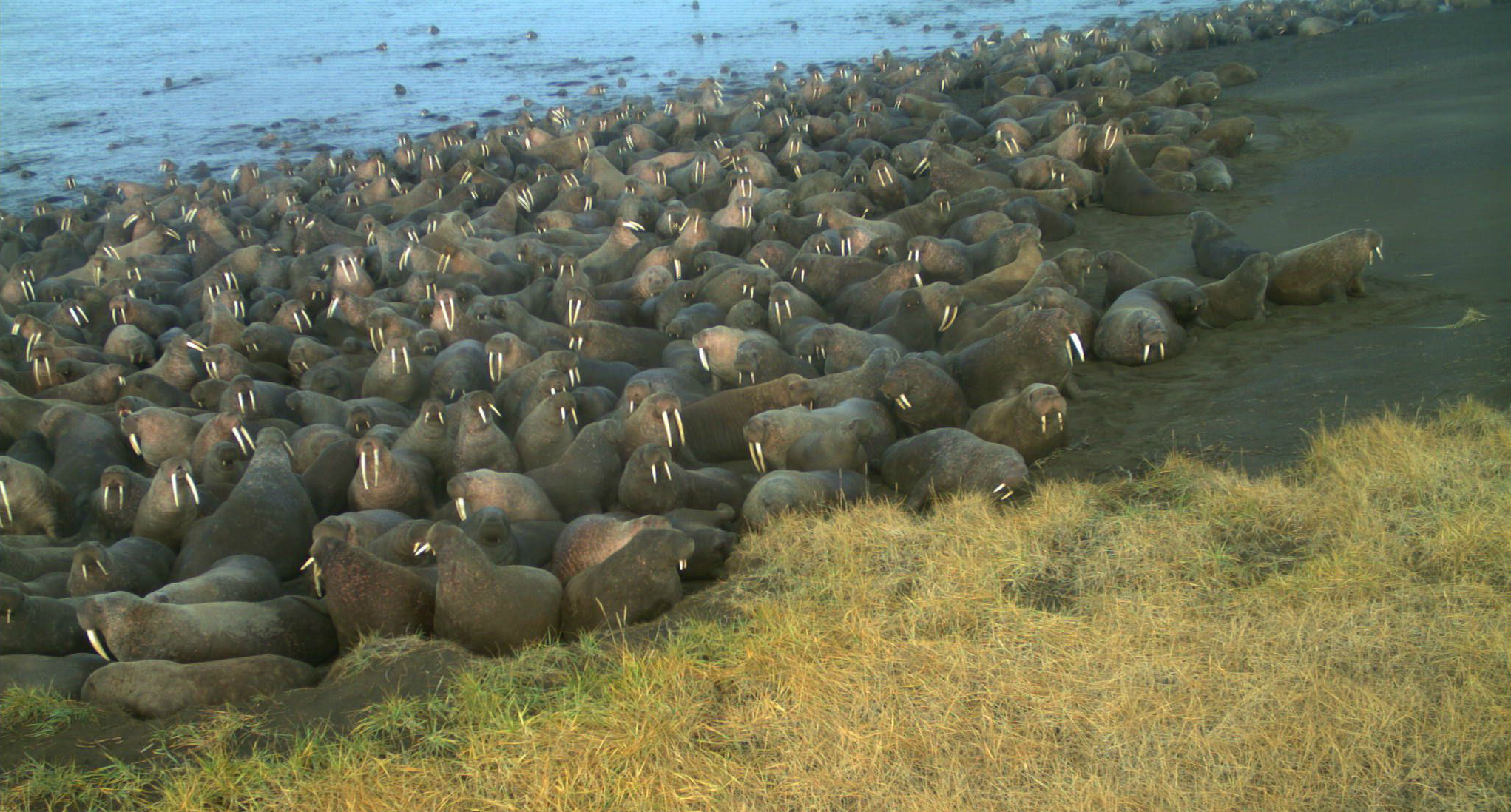Chukchi Sea walruses are massing on shore earlier than ever
Walrus haulouts near Point Lay have become common in the last decade — but are happening earlier as sea ice declines.

With Chukchi Sea ice extent dwindling to record lows for most weeks since early May, Pacific walruses are responding, congregating on Alaska’s northwestern shoreline earlier than at any time on record.
The year’s first report of large numbers of walrus congregating at a beach near the Inupiat village of Point Lay arrived on July 25, said Andrea Medeiros, a spokeswoman for the U.S. Fish and Wildlife Service.
“This is the earliest that we’ve received a report that walruses have hauled out at Point Lay,” Medeiros said.
The report from Point Lay said thousands of animals were gathered on the beach, she said.
When floating ice is present, walruses use it for resting between dives for food and for taking care of newborn calves and other young animals. Lack of summer and fall ice has pushed walruses to shore, far away from the preferred food-foraging grounds on the continental shelf.
The onshore gatherings of walruses at the site near Point Lay have become nearly annual events since 2007, which was, at the time, a record-low year for Arctic sea ice. The walrus congregations can number in the tens of thousands, with up to 40,000 animals estimated at a time.
But those gatherings have generally been in the fall, closer to the usual mid-September annual sea ice minimum.
Until now, 2017 held the record for the earliest-in-the-year gathering of walruses at the Point Lay site. That year, the animals began congregating by the hundreds during the first week in August, according to the U.S. Fish and Wildlife Service.
The beach site near Point Lay has emerged, for reasons yet not understood, as a preferred gathering place for Chukchi Sea walruses as sea ice has dwindled. Point Lay is home to about 200 people and is located about 300 miles southwest of Utqiagvik.
The large onshore crowds — made up almost entirely of females and young calves — can be dangerous for the animals. If they are disturbed, they can rush to the water in stampedes, trampling and killing young calves. For that reason, mariners and aviators are asked to keep their distance, allowing the walruses to stay calm.
The Native Village of Point Lay, a tribal government, and the Fish and Wildlife Service have advised pilots and boaters of this year’s early walrus gathering, Medeiros said.
The walruses’ rush to land is not the only change documented in the low-ice era.
Alaska Native walrus hunters have shifted their harvest timing over the past six years, according to reports gathered by the Arctic Research Consortium of the United States. Peak walrus-hunting season used to be in May and June but, as of last year, had shifted to March and early April, according to a report released earlier this year by ARCUS’ Sea Ice for Walrus Outlook program.
There are other population changes, according to the Sea Ice for Walrus Outlook program, which gathers observation and hunting information from residents in the villages and from experts at agencies. As of last year, the walruses harvested in the subsistence hunt were overwhelmingly male, with a much higher male-to-female ratio than in the past, according to the report.
“Hunters in all communities report that they are indeed seeing fewer calves and females on their boat trips,” the report said. Whether the females and calves are moving elsewhere or simply account for much less of the walrus population is unknown, the report said.
The extreme low-ice conditions present last year have intensified in 2019.
As of late July, the Chukchi Sea was almost 80 percent open water, according to information from the National Snow and Ice Data Center. That is a marked difference from the past, according to an analysis by Rick Thoman of the Alaska Center for Climate Assessment and Policy. In every year in the satellite record prior to 2007, the Chukchi Sea had less than 50 percent open water at the end of July, and before the mid-1990s, that figure was typically around 30 percent, according to Thoman’s analysis.